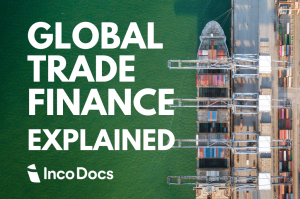When foreign companies export products at very low prices, it can harm local industries in the importing country. To protect these domestic industries from being undercut, governments impose anti-dumping duties. These duties help ensure fair competition and safeguard local businesses in the importing country.
In this article, we’ll explain what anti-dumping duties are and why they are important. We’ll look at how they work and their impact on global trade. You’ll also see real-world examples that show their effects on the market.
What is Dumping?
Dumping occurs when a company sells products in another country at a lower price than what it charges in its home market. In other words, the export price is cheaper than the normal price in the company’s own country. Dumping is often considered unfair because it can disrupt local markets in the importing country.
The lower prices offered by the foreign company make it difficult for local businesses to compete, leading to potential job losses and economic harm. Dumping creates an uneven playing field, favoring foreign companies over local producers.
Let’s say a Chinese electronics company produces a smartphone that costs $150 to make. In China, the company sells the smartphone for $200. However, when the company exports the same smartphone to another country, like India, it sells it for only $120.
This $120 price in India is lower than both the production cost ($150) and the price in China ($200). By doing this, the Chinese company can attract a large number of customers in India because its prices are much lower than those of local smartphone manufacturers. As a result, Indian smartphone companies struggle to compete with these low prices. They might lose significant market share, and some might even be forced out of business.
Anti-Dumping Duties
Anti-dumping duties are tariffs used by governments to protect their markets. They prevent foreign companies from selling goods at very low prices. These duties help make sure that imported goods are priced fairly, so local businesses can compete.
These duties add extra costs to goods sold too cheaply. If a company sells products abroad for much less than at home, the importing country can impose a duty. This duty raises the price of the imported goods to a fair level. This keeps the competition fair for everyone.
Anti-dumping duties are important for local industries. Without them, local companies might not compete against cheaper imports. These duties help save jobs and keep the economy strong by ensuring fair trade.
The Role of the World Trade Organization (WTO)
The World Trade Organization (WTO) sets rules for how countries can use anti-dumping and countervailing duties. One key aspect of these rules is proving “injury” to a local industry. For a country to impose these duties, it must show that its domestic industry is suffering. This could mean lost sales, lower profits, or even job losses. The WTO’s guidelines ensure that countries don’t apply these duties without a good reason.
If a country believes it has been unfairly affected by another’s duties, it can turn to the WTO. The WTO reviews the case to see if there is real evidence of injury. They check if the duties are set according to the rules. This process helps prevent trade conflicts and keeps the global market fair and balanced.
Determining Anti-Dumping Duties
Investigation Process:
When a company or industry suspects dumping, they can file a complaint. The investigation starts with authorities, like the U.S. Department of Commerce, International Trade Commission (ITC), or the European Commission, conducting research and gathering data. They look at prices, costs, and market impacts. For an investigation to proceed, certain conditions must be met.
Calculation of Duties:

Duties are calculated based on the dumping margin, which is the difference between the export price and the fair market value in the home country. If the margin is above a certain threshold, anti-dumping duties can be applied.
Threshold Requirements:
- U.S. Requirements: In the U.S., if the dumping margin is less than 2% of the export price, the investigation is typically dropped. Also, if the volume of dumped imports from one country is less than 3% of total imports of that product, the case may not proceed. However, if multiple countries each contribute less than 3% but together account for 7% or more, the investigation can continue.
- EU Requirements: The EU has similar thresholds. They also drop cases if the dumping margin is below 2% or if the volume of imports is negligible. The EU considers whether the dumped imports represent less than 1% of market share for individual countries, and cumulatively less than 3% for all countries under investigation.
These thresholds ensure that only significant cases of dumping, which have a real impact on the local market, lead to additional duties being applied. Both the U.S. and EU use these rules to ensure fairness in their investigations while avoiding unnecessary trade barriers.
Real-World Examples of Anti-Dumping Duties
The U.S. and EU have both imposed anti-dumping duties to protect their markets. These cases show the impact of such measures on industries and global trade.
Case Study: U.S. Steel Industry
The U.S. steel industry has struggled with cheap imports. To protect local steelmakers, the U.S. government put anti-dumping duties on steel from several countries, including China. These duties were applied after investigations showed that foreign steel was sold well below fair market value. By imposing these tariffs, the U.S. raised the price of imported steel to match domestic prices. This helped American steelmakers compete and saved many jobs.
Case Study: EU and Solar Panels
The European Union faced a similar issue with solar panels from China. Investigations found that Chinese companies were selling solar panels in the EU for less than it cost to make them. This made it tough for European companies to compete. In response, the EU imposed anti-dumping duties on these Chinese products. These duties helped level the playing field for European producers. However, it also led to higher prices for consumers.
Trade War Could Be a Result
Anti-dumping duties can sometimes lead to trade wars. When one country sets tariffs, the other might respond with its own duties. This back-and-forth can escalate, affecting both economies.
For instance, after the EU imposed duties on Chinese solar panels, China retaliated with higher tariffs on European wine. This move made it more expensive for Chinese consumers to buy European wine, which hurt European exporters. These kinds of actions can raise tensions and make international trade more complicated.
Countervailing Duties
Countervailing duties (CVDs) are tariffs on imported goods that get help from foreign government subsidies. These subsidies give foreign companies an edge, letting them sell products at lower prices. CVDs help balance things out by adding extra costs to these imports. This makes it fairer for local producers.
Countervailing duties and anti-dumping duties both protect local industries, but they focus on different problems. Anti-dumping duties go after companies selling goods abroad for less than in their home market. CVDs, on the other hand, target imports that get a boost from government subsidies. The aim of CVDs is to remove the unfair advantage that these subsidies create.
CVDs play a key role in promoting fair trade. They stop subsidized goods from flooding the market and hurting local businesses. By using CVDs, countries ensure a level playing field for everyone.
Impact of Anti-Dumping Duties
For consumers, anti-dumping duties can mean higher prices. When tariffs are added to imported goods, the cost often goes up. This increase can be passed on to shoppers, leading to fewer choices and higher prices for everyday items. Consumers may end up paying more, even if the duties help local industries.
In the long term, these duties can affect global trade relationships. Repeated use of anti-dumping measures can lead to a more protectionist stance. Countries might focus more on defending their markets than on promoting open trade. This can disrupt market stability and lead to less cooperation among trading partners. Over time, it may slow down global economic growth and make trade more unpredictable.







